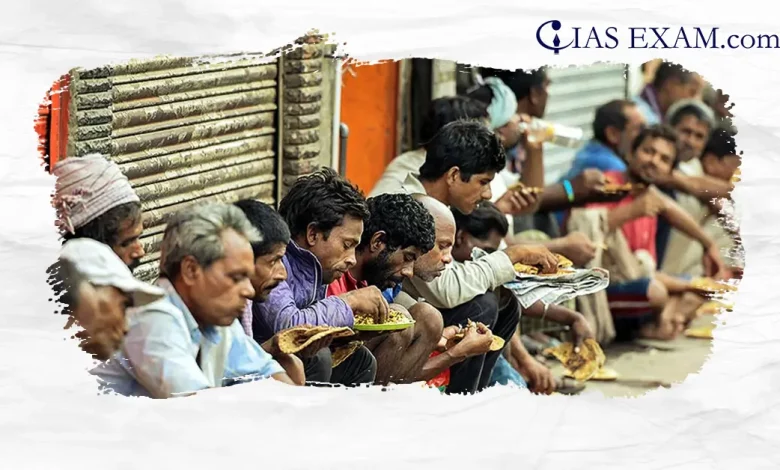
Context
NITI Aayog has claimed that India’s poverty level has declined to 5%, citing the Household Consumption Expenditure Survey (HCES) 2022-23.
Findings of HCES 2022-23
- The urban-rural consumption gap has narrowed from 91% in 2004-05 to 71% by 2022-23, reducing inequality.
- Rural household food expenditure fell below 50% of total expenditure for the first time.
- With urban and rural consumption growing at a rate of 2.5 times that of 2011-12 at current prices, India’s growth is not only modest, but very broad
- According to the NITI Aayog Multidimensional Poverty Index 2023, 11% of the population was below the poverty line, on the basis of which it was claimed that 250 million people have escaped poverty.
Changes in spending patterns
- Low spending on corn and rice — less than 5% of each consumer’s expenditure — leads to higher spending on transportation, consumer durables and consumer services
- It means people make more money and have to spend less on food.
- The consumption of alcohol, processed foods, dairy and fruit in the diet is increasing, indicating a varied and balanced diet
Government steps to reduce Poverty
- Mahatma Gandhi National Rural Employment Guarantee Scheme (MGNREGS): Provides at least 100 days of unskilled manual labor to every required rural household in a financial year producing productive assets of rated quality and it will be permanent come.
- National Food Security Act (NFSA), 2013: Provides 67% of the population (75% in rural and 50% in urban areas) legal entitlement to highly subsidized food
- Pradhan Mantri Ujjwala Yojana (PMUY) (2016): This scheme was launched to provide LPG (liquefied petroleum gas) connections to women below poverty line (BPL) families.
- Deendayal Antyodaya Yojana-National Rural Livelihood Mission (DAY-NRLM): Aims to reduce poverty by providing poor households with gainful self-employment and opportunities for skilled paid employment which different sustainable lifestyles have emerged for the poor.
- Ayushman Bharat Scheme: Provides health insurance coverage of up to ₹5 lakh per family per annum to relieve the beneficiaries from the financial burden of expensive treatment, so that they do not fall deeper into poverty due to health because of the cost.
Way forward
- Employment: Poverty can be reduced substantially by creating more employment opportunities, especially in industries that require more unskilled and semi-skilled workers.
- Skill Development Investment in education and skill development programs such as vocational training and apprenticeship programs is essential to increase the productivity of the workforce.
- Women’s Empowerment: Women’s access to education, health, financial services and employment opportunities can improve household income, enhance family well-being and contribute to overall economic growth.
Source- The Indian Express
UPSC Mains Practice Question
Q.“The poverty line in India may not allow a comfortable existence, but allows above subsistence existence”. Critically examine the concept of poverty in India. (200 words)





.png)



